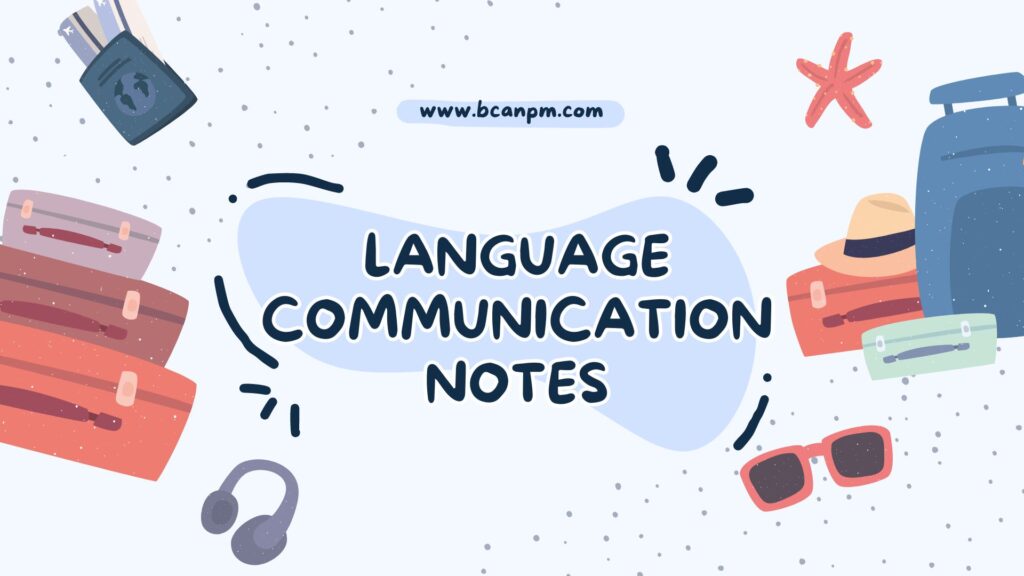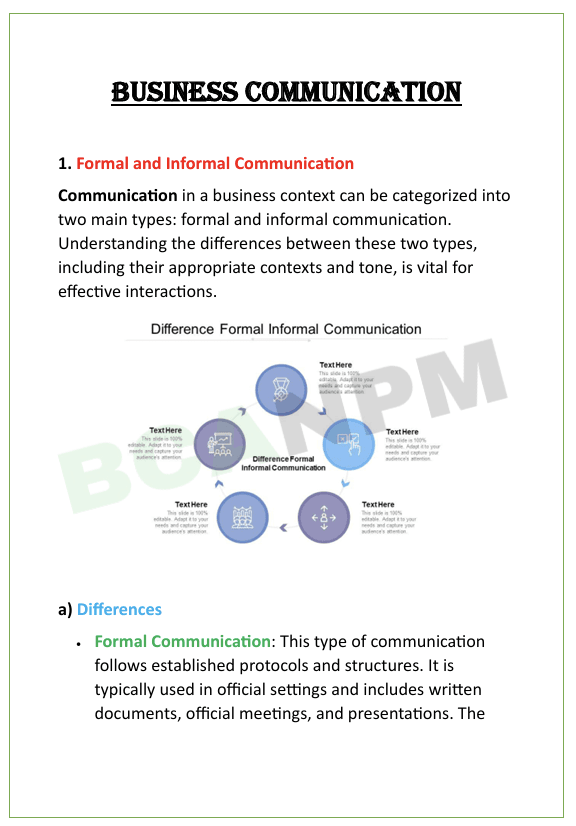
Free Download Language Communication Notes in pdf - Free Download Notes in pdf – Bca 1st Semester. High quality, well-structured, and Standard Notes that are easy to remember.
Welcome to Bcanpm.com
Bcanpm provides standard or well-structured Notes for Bca students. The notes are free to download. Each semester notes of Bca are available on www.bcanpm.com. In this post you can download notes of Language Communication Notes in pdf – Free Download. All units are available to download for free.
Language Communication Notes in pdf - Free Download Notes Unit 1 – 5

Unit 1: Introduction of Communication
“Communication” refers to the exchange of information between two or more entities through a medium.

Unit 2: English Grammar and Usage
“English grammar and usage” refer to the set of rules that govern how words are structured and arranged in sentences to convey meaning effectively.

Unit 3: Business Communication
“Business communication” refers to the exchange of information within and outside an organization to achieve business goals.

Unit 4: Presentation Skills
“Presentation skills” involve the ability to effectively communicate information, ideas or messages to an audience through spoken words, visuals, and body language.

Unit 5: Reading and Writing Skills
“Reading and writing skills” are fundamental aspects of communication that involve understanding and producing written language.
Syllabus of Language Communication
UNIT – 1
(a) Introduction to Communication:
Definition, nature, and importance of communication
Elements and types of communication – verbal, non-verbal, written, visual
Process of communication
Barriers to effective communication and ways to overcome them
(b) Principles of Effective Communication:
7 Cs of communication – clarity, conciseness, concreteness, correctness, consideration, completeness, courtesy
Listening skills – active listening, barriers to listening
Role of feedback in communication
UNIT – 2
Grammar and Vocabulary Development:
Parts of speech – nouns, verbs, adjectives, adverbs, prepositions, conjunctions
Tenses – usage and common errors
Subject-verb agreement
Synonyms, antonyms, one-word substitutions
Common idioms and phrases
UNIT – 3
Writing Skills:
Paragraph writing – structure and coherence
Letter writing – formal and informal letters
Email writing – format, etiquette, and tone
Report writing – types, format, and essentials of a good report
Précis writing – techniques and practice
UNIT – 4
Speaking Skills:
Oral communication – characteristics and importance
Extempore, group discussions, and presentations
Pronunciation, intonation, and clarity in speech
Public speaking – overcoming stage fear and confidence building
Interview techniques – preparation, questions, and mock interviews
UNIT – 5
Reading and Comprehension:
Reading techniques – skimming, scanning, intensive and extensive reading
Comprehension passages – inference, vocabulary in context, answering questions
Critical reading – identifying tone, attitude, and purpose
Note-taking and summarizing skills